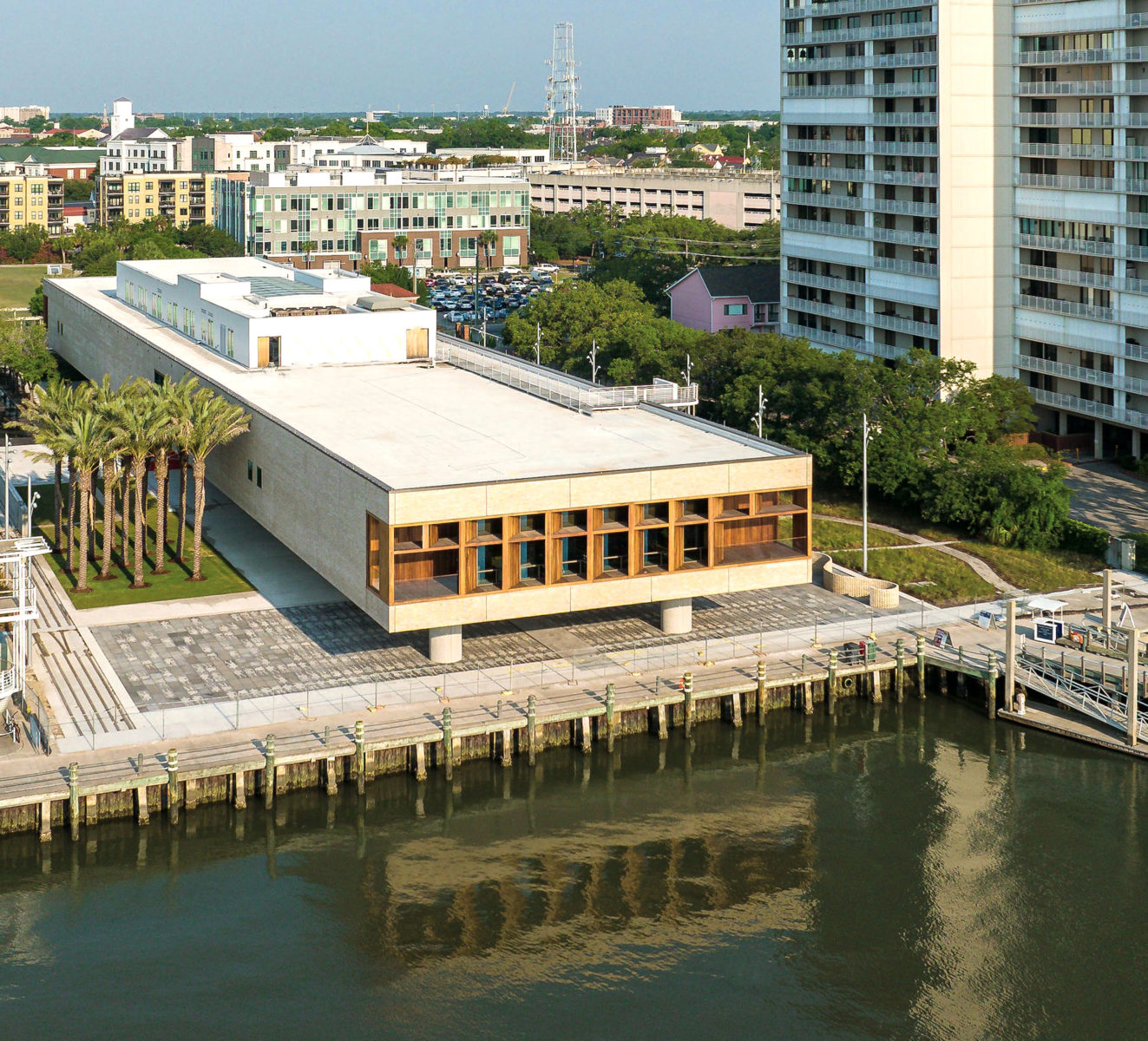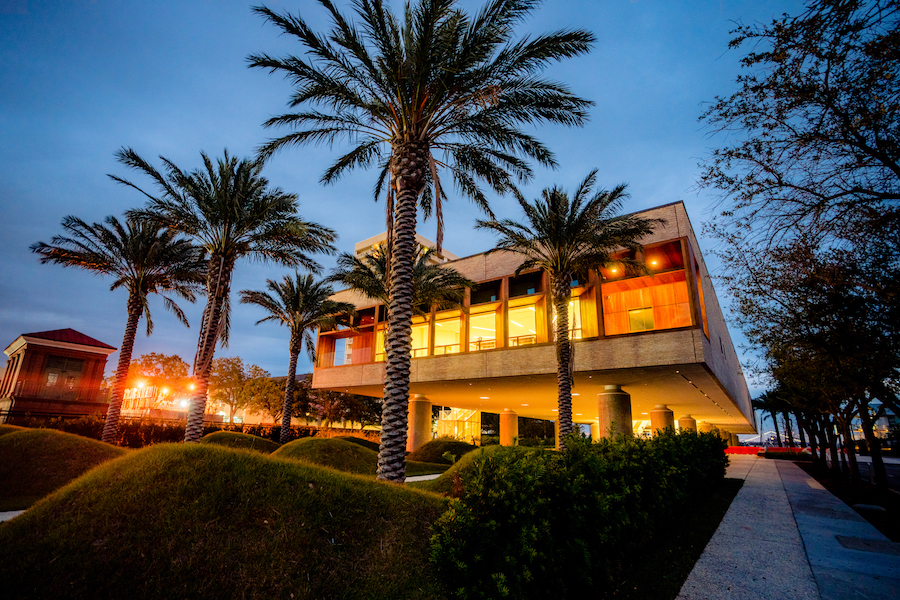Town Carolina: International African American Museum: Long and Winding Road
Charleston’s new International African American Museum unravels histories of African American experiences
It’s been a long time coming—23 years, to be exact. It took that long to muster the support and funding required to create the International African American Museum. It was in 2000 that former Charleston Mayor Joseph P. Riley Jr., voiced a need for the museum in his State of the City address. “The museum is an amalgamation of many hopes and dreams,” says Malika Pryor Martin, the chief learning and engagement officer at IAAM, “but Mayor Riley was the champion in chief.” Today, one look tells you it was well worth the wait.
Raised 13 feet above the ground on 18 cylindrical pillars, the 46,500-square-foot building rises above Gadsden’s Wharf, the port of arrival for 45 percent of the enslaved Africans that were brought to America. Between 1710 and 1808, Charleston received an estimated 809 slave ships and 152,000 enslaved African captives. Their story begins on the wharf at the Tide Tribute, which honors the untold numbers of African Americans who did not survive the cruel two-month-long journey across the Atlantic Ocean. Washed by the rising and falling tides, tabby figures are positioned in relief as they might have been in the belly of the ships that transported them to these shores.
Tide Tribute forms part of the African Ancestors Memorial Garden, which presents an introduction to the museum. Its carefully chosen flora reflects both that of the ancestors’ native countries as well as the plants indigenous to their point of arrival on the Lowcountry coast.
Inside the museum, nine distinct galleries contain 11 core exhibits that limn the countless ways in which enslaved Africans and free Black people shaped economic, political, and cultural development throughout America and beyond. The story of the African Diaspora begins in the museum’s East Wing, with the arduous transatlantic passage. While seen through an international lens, exhibits manage to circle back to the South Carolina Lowcountry, in part by examining the culture of the Gullah Geechee community and presenting the achievements of African Americans throughout South Carolina’s history. The Carolina Gold gallery takes a look at life on Lowcountry rice plantations. Wading knee-deep in muck and mud, surrounded by alligators, snakes, and other denizens of the Lowcountry marshes, enslaved workers on these plantations were subject to countless ills. In fact, the Carolina rice fields had the second-highest death rate in the New World (right behind sugar plantations in the Caribbean).



